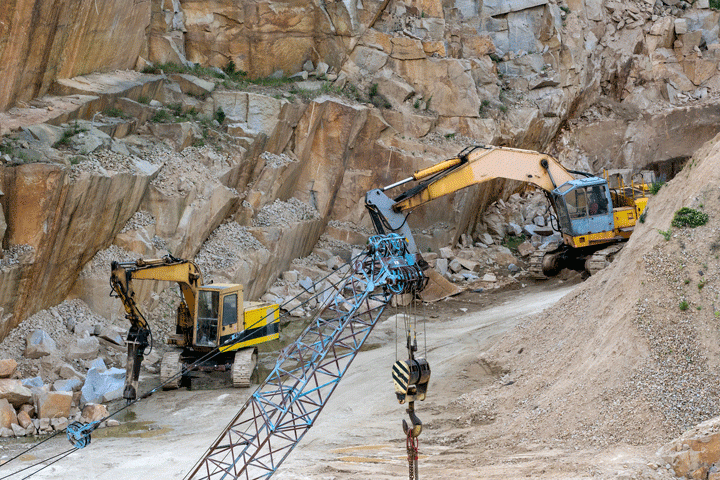Diving right into of Granite Quarries in South Africa
Diving right into of Granite Quarries in South Africa
Blog Article
Discovering the Rich Background and Sustainable Practices of Granite Quarrying
As we stand on the precipice of discovering the elaborate tapestry of granite quarrying, a trip through time exposes not simply the physical act of extracting rock but likewise the social and historical relevance woven right into the very material of this technique. From the ancient beginnings that laid the structure for modern quarrying techniques to the sustainable methods that are forming the future of this industry, each carve mark on granite surface areas tells a tale waiting to be discovered (granite quarries in south africa). The tradition of granite quarrying stretches much beyond plain extraction; it is a testimony to human resourcefulness, resilience, and the enduring appeal of this stunning rock
Old Beginnings of Granite Quarrying
Dating back to ancient people, the method of quarrying granite has actually been an essential part of human history and building innovation. The earliest proof of granite quarrying go back to old Egypt, where massive pyramids and elaborate sculptures were crafted from this long lasting rock. The Egyptians made use of primitive devices to remove granite blocks from quarries, showcasing the relevance of this material in their monumental constructions.
Progressing in history, the Greeks also made considerable contributions to the quarrying of granite. The Greeks used granite in different architectural marvels, such as temples and statues, demonstrating their skill in shaping and sculpting this hardy stone. The Romans even more refined the techniques of quarrying granite, employing advanced devices like knives and hammers to remove and form granite for their famous structures.
Through the centuries, the practice of quarrying granite has developed, with modern innovations boosting performance while preserving the ageless charm of this natural stone - granite quarries in south africa. From ancient civilizations to contemporary contractors, the legacy of granite quarrying continues to shape our world
Evolution of Quarrying Techniques
The development of quarrying techniques has actually been noted by a constant development towards better efficiency and accuracy in extracting granite. Early quarrying strategies involved hands-on labor with basic tools such as knives, hammers, and wedges to extract granite blocks from the planet.
In even more recent times, the development of machinery reinvented the quarrying sector, enabling much faster extraction rates and boosted performance. Technologies such as diamond cable saws, high-pressure water jets, and pneumatically-driven drills have actually become common in modern quarries, enabling for exact cutting and lowered waste. Improvements in computer-controlled tools and 3D modeling have actually maximized quarrying procedures, leading to minimal environmental effect and enhanced sustainability methods. As the need for granite proceeds to climb, the advancement of quarrying techniques remains important to meeting market needs efficiently and sustainably.
Social Significance of Granite
Granite holds a profound cultural value throughout different people because of its enduring presence in building work of arts and admired monuments. From the stunning pyramids of Egypt to the elaborate carvings of the Angkor Wat holy place in Cambodia, granite has been a material of choice for sharing magnificence and durability in cultural heritage. In old Rome, granite columns decorated temples and public structures, signifying stamina and permanence. The social relevance of granite extends past its physical qualities; it personifies durability, stability, and eternity, making it a symbol of sustaining traditions and traditions.

Lasting Practices in Quarrying
Among the abundant history of granite quarrying and its cultural value lies a growing emphasis on lasting practices within the sector. As ecological awareness and problems regarding resource deficiency have enhanced around the world, the quarrying market has increasingly welcomed sustainable methods to lessen its effect on the environment and bordering neighborhoods.

Furthermore, find out this here reclamation and rehabilitation of quarry sites post-extraction are integral to lasting techniques. By recovering quarried locations to an all-natural or helpful state, such as producing wild animals environments or leisure areas, quarriers can offset the environmental impact of their procedures and contribute positively to the local ecological community.
Heritage of Granite Quarrying
With a historic backdrop steeped in workmanship and commercial development, what enduring influence has granite quarrying left on the landscape of modern-day society? The legacy of granite quarrying goes beyond simple extraction techniques; it has actually shaped architectural wonders, city landscapes, and click cultural heritage worldwide. The durable nature of granite has actually made it a favored choice for monoliths, structures, and infrastructure, standing as a testimony to the skill and artistry of quarry employees across generations.
Moreover, the financial footprint of granite quarrying can not be forgotten. The market remains to give job opportunity and drive regional economies in areas where granite extraction is widespread. It has also stimulated technical improvements in quarrying techniques and tools, resulting in extra effective and lasting practices.
In terms of sustainability, the heritage of granite quarrying includes efforts to alleviate ecological impacts with recovery projects and responsible resource administration. By stabilizing financial interests with environmental stewardship, the market makes every effort to ensure that future generations can continue to take advantage of this long-lasting natural deposit.
Verdict

Report this page